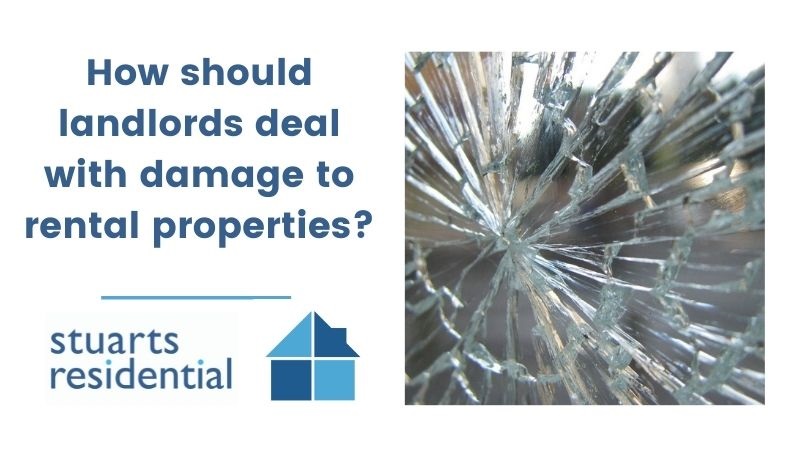Damages happen within a home whether it is owned or rented out, as we all learn from an early age “accidents happen”. Nonetheless, due to the fact that within a rental property tenants generally come and go a lot more regularly than people that buy a property, it could be suggested that the threat of damages is higher. But exactly how should a landlord deal damage? What rights do they have and is there any kind of legislation to assist them?
Ultimately, the tenant is responsible for any type of damage that they cause to the property they are renting. The damage needs to be reported as soon as possible so that it can be fixed or at the very least assessed by either the landlord, the letting agent or a tradesman. It might be that the damages require fixing instantly, or it might be that damage is found at the end of a tenancy and the landlord may need to deduct monies from the tenant’s deposit to cover damage repairs.
At this point, it is important to assess the differences between, wear and tear, damage or deterioration. As each of these has very different remedies and responsibilities.
Wear and Tear
Normal wear and tear has to be expected within a rental property, it is simply the result of daily living and everyday use. It is just the deterioration that occurs in the course of living in a property. It is not caused by abuse or neglect and is not classed as damage. Examples of normal wear and tear are the following:
- A couple of small stains on a carpet
- Small scrapes or dents on a wooden floor
- Colour of carpet or hardwood fading due to exposure to sunlight
- Dirty grout
- Loose door handles
- Silver or chrome finish on bathroom fixtures beginning to wear away
Wear and tear can further be defined as deterioration that can be reasonably expected to occur. It is normal, for example, for there to be some scuffs in the paint after a tenant moves out of a rental property. The scuffs in the paint would be considered normal wear and tear. A hole in the wall on the other hand would be considered damage for definite.
Damage
Damage is not something that is naturally occurring. It is harm that affects the value, or normal function of the property. This damage may come about by deliberate means or through neglect of the property and its fixtures. Examples of damage may include:
- A smashed bathroom mirror
- A broken toilet seat
- A hole in the middle of a door
- Damaged or missing door handles/locks
- Carpet soaked or damaged by pets/pet urine
Damage can be defined further as issues that are unexpected. For example, it is not normal or expected for there to be a large hole in an interior wall when a tenant leaves a property.
Wear and tear is a term commonly used when dealing with rental properties, and trying to determine the difference between normal wear and tear and damage to a rental unit often becomes an issue when a tenant moves out and is looking for his security deposit to be returned. A landlord cannot make deductions for normal wear and tear, but a landlord can make deductions for damage to the property.
These issues can lead to disputes between tenants and landlords. A tenant might believe a security deposit is his or her property and should be returned to them at the end of the lease. They paid their rent on time and not broken any terms of the lease, so they expect the security deposit to be returned in full.
The landlord’s goal, however, is to make sure the rental property is maintained in good condition. If he believes the tenant has abused the condition of the rental property in any way, he will take deductions from the tenant’s security deposit in order to fix this damage.
Every landlord has the responsibility to maintain their rental properties by making needed repairs. If damage at the rental property is caused by the landlord’s failure to properly maintain the property, then the landlord cannot take deductions from the tenant’s security deposit, even if the damage is inside the tenant’s unit. For example, if a neglected roof repair has caused damage to the interior ceiling, this damage is the landlord’s responsibility, not the tenant’s.
We provide expert advice and letting agent services to Landlords across Somerset, and we are always happy to chat with anyone who is finding managing their property a bit of a struggle – contact us on hello@stuartsresidential.com or 01749 672 678.
